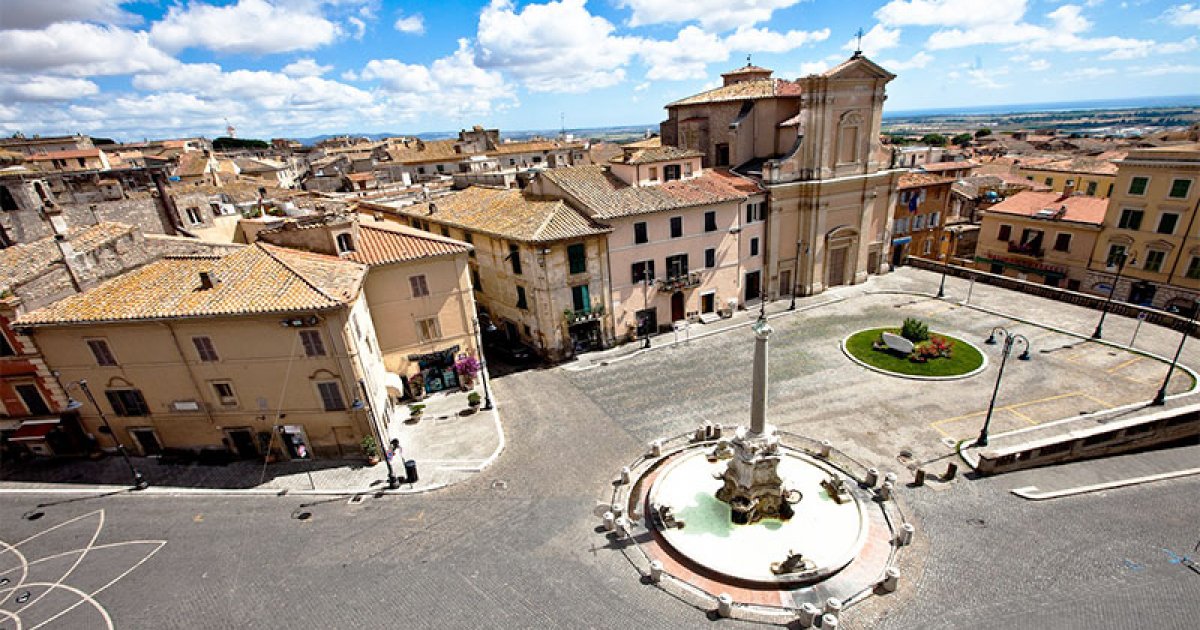PALAZZO COMUNALE AND PIAZZA DEL COMUNE, Presentation
 Language: English / USA
Language: English / USA
Palazzo Comunale was built in the 13th century, using the second ring of the city walls as a load-bearing wall. The present-day building combines Palazzo dei Priori with Palazzo del Podestà, and is the result of a number of extensions to the original construction. The oldest part is the part adjacent to the Church of Santa Maria del Suffragio, the bell tower of which originally belonged to it.
Entry to the building was along the long external staircase you can see leaning against the south facade, which leads to the elegant loggia. In the late 15th century, Palazzo del Podestà was added to this part.
The original three-light windows on both facades were unfortunately destroyed in the 16th century and replaced with square-shaped windows, when the architect Donato Bramante designed the large new bell tower.
The reception hall of the building you enter from the outside staircase was frescoed in 1629 by Camillo Donati and Giulio Giusti, with scenes depicting the mythical origins of Corneto, said to have been founded by Corythus, an ancestor of the builder of Troy. The family tree on the fresco, originating from Aeneas, shows all the kings of Alba Longa until the foundation of Rome. Other scenes depict the massacre of the Cornetans by the troops of Frederick II, the flight of Eugene IV from Rome and his return escorted by the cardinal Giovanni Vitelleschi and The Roman senate decreeing that an equestrian statue be erected to Vitelleschi.
In the council hall, you can admire three paintings by the 20th-century Chilean artist Sebastian Matta, who for many years had a home in Tarquinia, as well as a detached fresco from the first half of the 15th century depicting The Crucifixion with the Virgin Mary and Saint John, attributed to the painter Antonio Zacchi, known as Il Balletta.
Now press pause, finish your visit to Palazzo Comunale and press play again when you come out onto the square.
Take time to admire this splendid square, which you’re sure to find interesting.
Observe the fountain in the center, dating to 1725 and designed in Barocchetto style by Filippo Barigioni, who also designed the obelisk of the fountain opposite the Pantheon in Rome. It was sculpted by Francesco Pincellotti, who also worked on the world-famous Trevi Fountain.
Aligned with Palazzo Comunale, also looking onto the square is the Baroque-style Church of Santa Maria del Suffragio, built in 1759. The centrally planned interior has three altars. The two at the sides are embellished with paintings depicting, respectively, the Miracle of Saint Isidore, by Gioacchino Paver, and Saint Francis of Paola and other saints, by Teodoro Rusca. The centrally planned eighteenth-century church in front of it, known as San Leonardo, or the Addolorata, has four deep chapels and is the work of the architect Gian Domenico Navone. The elegant Baroque interior of the church is reminiscent of the architectural style of Francesco Borromini, one of the greatest architects of the 17th century.



